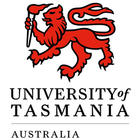Associate Degree in Arts – Art and Curatorial Practices
Associate Degree in Arts – Art and Curatorial Practices
The Associate Degree in Arts is a two-year course, full time (or part-time equivalent), that provides you with opportunities to interpret human culture and behaviour from different perspectives and periods, to explore today’s big questions and learn how to support the social and economic development of humanity, and/or to be…
Categories
COURSE DESCRIPTION
The Associate Degree in Arts is a two-year course, full time (or part-time equivalent), that provides you with opportunities to interpret human culture and behaviour from different perspectives and periods, to explore today’s big questions and learn how to support the social and economic development of humanity, and/or to be immersed in creativity, performance and innovation.
The award is designed to allow you to choose your path: it can be the first two-years of your Bachelor of Arts study, or you may like to enrol in this degree to pursue your passion and undertake two of the majors in the BA, or to extend your curiosity and try units from a number of disciplines.
The Associate Degree in Arts gives you the flexibility to choose from subjects to build your knowledge and diversify your skills from a wide range of over twenty possible majors and minors in the Bachelor of Arts as well as many individual elective study options.
Learning Outcomes:
Analyse perspectives and evaluate both broad general and technical knowledge from disciplines in the Bachelor of Arts to identify and reflect on social, cultural, political, ethical or environmental issues in local, cross-cultural and/or global contexts and their impacts;
Communicate independently, by written, oral and technology supported modes, to provide clear coherent expositions to specialist and non-specialist audiences; Apply knowledge, analytical and technical skills as a basis for decision-making and planning and
Apply disciplinary knowledge and skills with flexibility to demonstrate initiative, resilience, accountability, and social responsibility; whether working independently or in collaboration with others.
Course structure
The Associate Degree in Arts requires the completion of 200 credit points comprising:
200 credit points of Discipline Elective units or;
A 100 credit point major and 100 credit points of Discipline Electives.
Majors: Art and Curatorial Practices – In a time when the term ‘curated’ is thrown around everywhere, the Art and Curatorial Practices major shows how an understanding of art as both artefacts and experiences can shape how creative work is made, analysed and communicated. Curatorial practices, as a term, encapsulates the idea that curatorship question the traditional narratives of art history, and create transformative encounters with creative work. In this major, you will develop visual and spatial literacies in conjunction with high level writing and project management skills, enabling you to conceptualise and carry out curatorial projects in the visual arts. This major immerses you in contemporary curatorial debates and practices, using object-based learning, authentic assessment, and industry contextualisation. You will develop an understanding of art theory and history from a contemporary Tasmanian standpoint, with a commitment to decolonisation, ecological awareness, and place.
This major will prepare you to work in areas such as curating and administrating in emerging, independent and events-based arts, as well as equipping you for further study in postgraduate coursework and research. The major will provide training in project management and develop your effective communication strategies and digital literacy. Unit choices allow you to explore how art and curatorial practices can facilitate the voices of diverse communities, become part of tourism and cultural heritage interpretation, and bring the past into the present through digital humanities. In your curatorial practice project, you will develop and pitch an idea for your own curatorial project to a panel of industry experts, ready to take your next step through connections with art institutions and experimental, independent art organisations.
Available: On campus Hobart and Launceston.
REQUIREMENTS
Admission to undergraduate courses at the University of Tasmania requires the completion of qualifications equivalent to a 12th year of education in Australia.
Most of our undergraduate programs have the following English language requirements.
IELTS (Academic) – 6.0 (no individual band less than 5.5)
TOEFL (iBT) 72 (no skill below: Reading 10; Listening 9; Speaking 16; Writing 19)
PTE Academic 50 with no score lower than 42
UTAS Access-English Level 6 – 60% (no individual score less than 55%)
Cambridge CAE (Certificate of Advanced English) – B Grade
Cambridge CPE (Certificate of Proficiency in English) – C Grade
Cambridge BEC (Business English Certificate) Higher – C Grade
EDUCATIONAL INSTITUTION
The University of Tasmania was officially founded on 1st January 1890 and is located at Sandy Bay, Tasmania. In addition to the main campus at Sandy Bay, it also operates out of the Newnham Campus and the Cradle Coast Campus. The most popular courses offered are the environmental studies that include wilderness management, marine sciences and indigenous studies in Tasmanian literature. Other unconventional courses include agriculture development, studies on the community and population and ocean study programs. The university also comprises of a Music Conservatorium, Art school and a School of Clinical studies.




